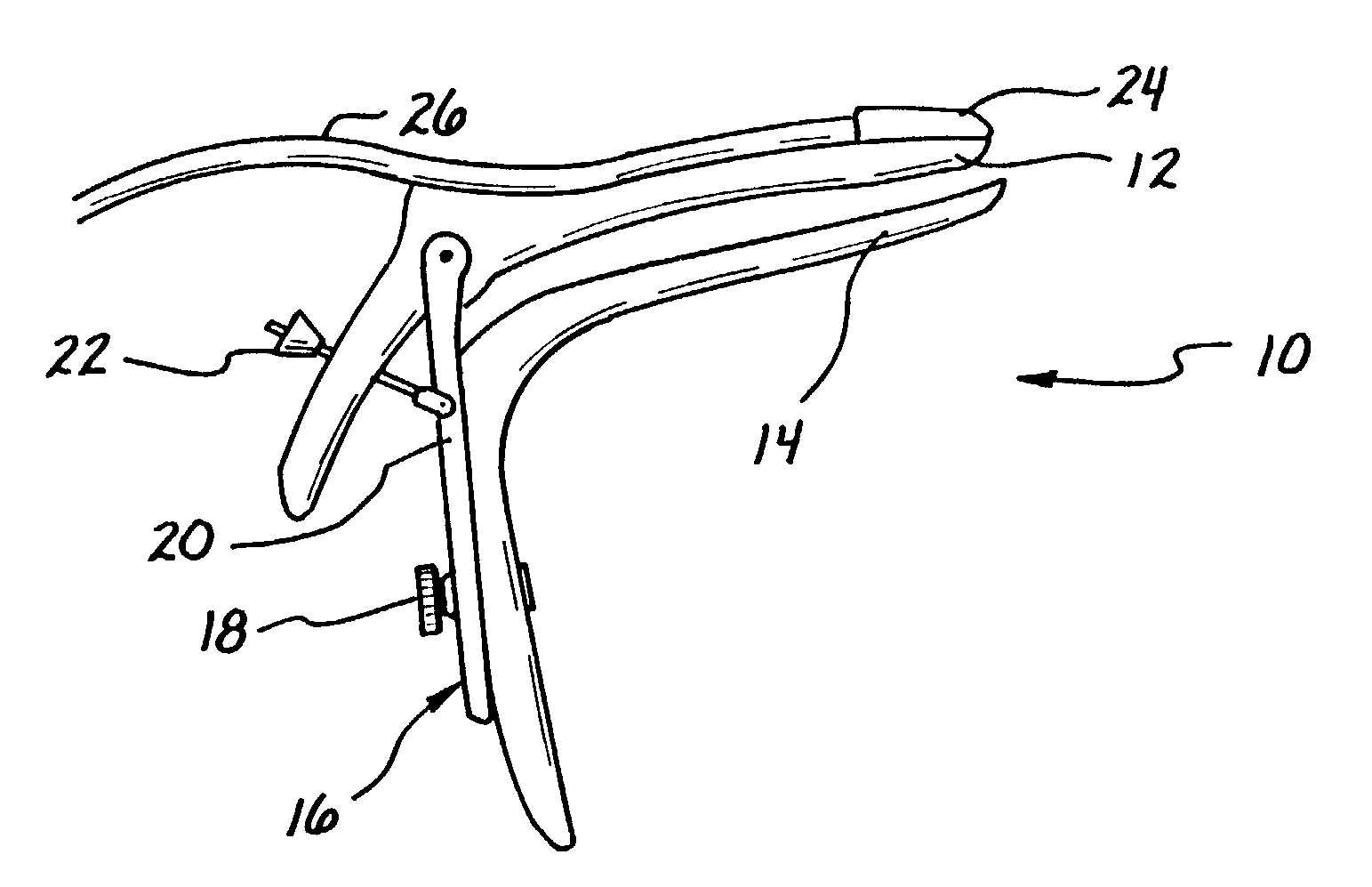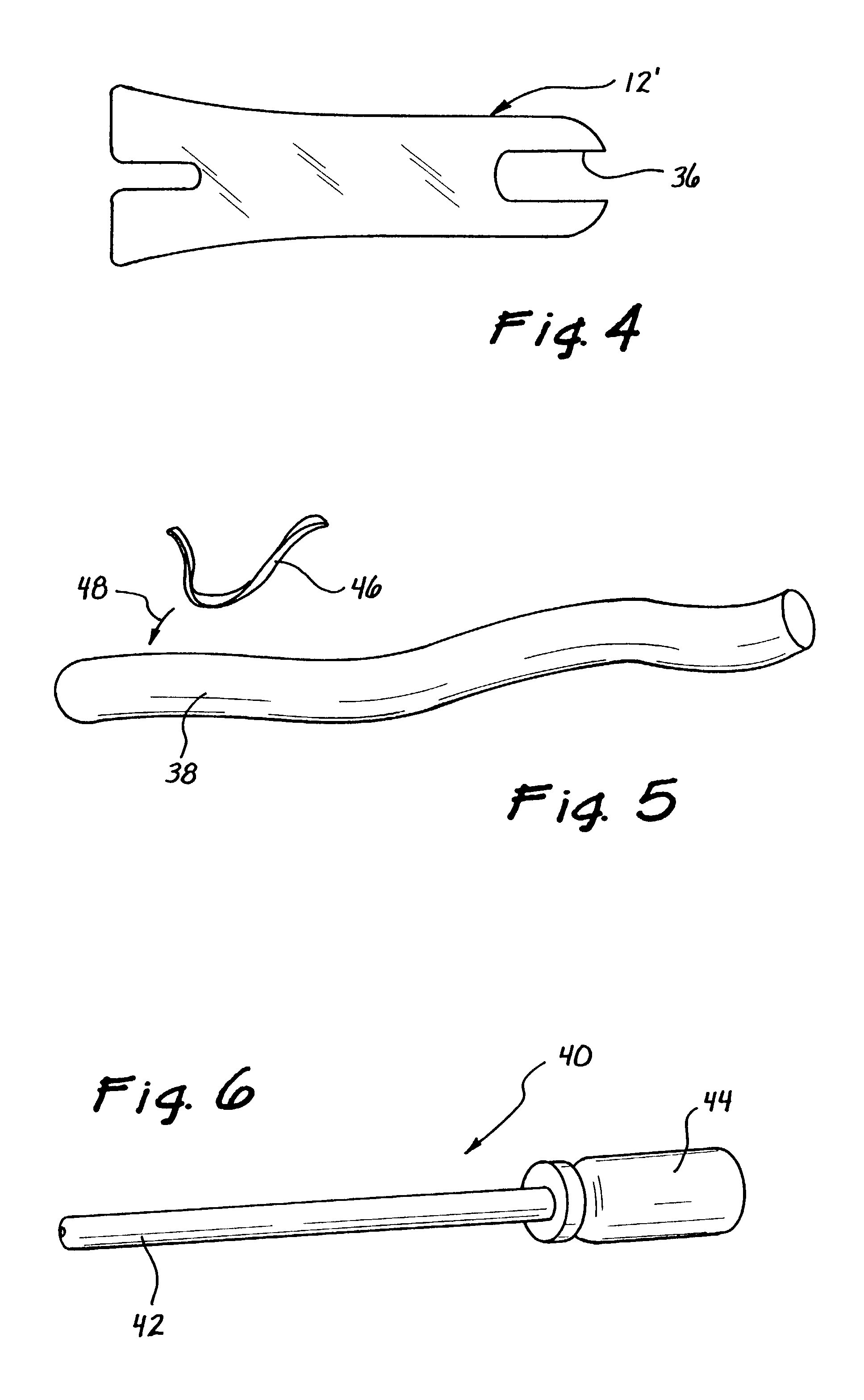Speculum having ultrasound probe
a technology of ultrasound probes and speculum, which is applied in the field of medical procedures, can solve the problems of inability to adequately visualize difficulty in locating embryos, and difficulty in adequately observing the cervical canal and uterine cavity, and achieve the effect of superior transvaginal ultrasound imaging
- Summary
- Abstract
- Description
- Claims
- Application Information
AI Technical Summary
Benefits of technology
Problems solved by technology
Method used
Image
Examples
Embodiment Construction
[0029]Now with reference more particularly to the drawing figures, there is shown in FIG. 1 a first embodiment of a medical instrument or speculum 10 constructed in accordance with the principles of the present invention. For purposes of defining terminology in the appended claims, the term “speculum” is broadly defined as a physical device for separating tissue to allow visualization of an internal bodily structure, such as the cervix. The speculum 10 in the illustrated preferred embodiment may be of a generally conventional design, except as described below, and comprises an anterior (upper) blade 12, as well as a posterior (lower) blade 14. As is well known in the art, the two opposed blades 12, 14 are movable between a closed position for insertion and withdrawal, and an open position for performing a pelvic examination or procedure. A downwardly depending handle portion 16 operates to effect blade movement, as desired, in a manner also well known in the art. A screw 18 on the h...
PUM
 Login to View More
Login to View More Abstract
Description
Claims
Application Information
 Login to View More
Login to View More - R&D
- Intellectual Property
- Life Sciences
- Materials
- Tech Scout
- Unparalleled Data Quality
- Higher Quality Content
- 60% Fewer Hallucinations
Browse by: Latest US Patents, China's latest patents, Technical Efficacy Thesaurus, Application Domain, Technology Topic, Popular Technical Reports.
© 2025 PatSnap. All rights reserved.Legal|Privacy policy|Modern Slavery Act Transparency Statement|Sitemap|About US| Contact US: help@patsnap.com



